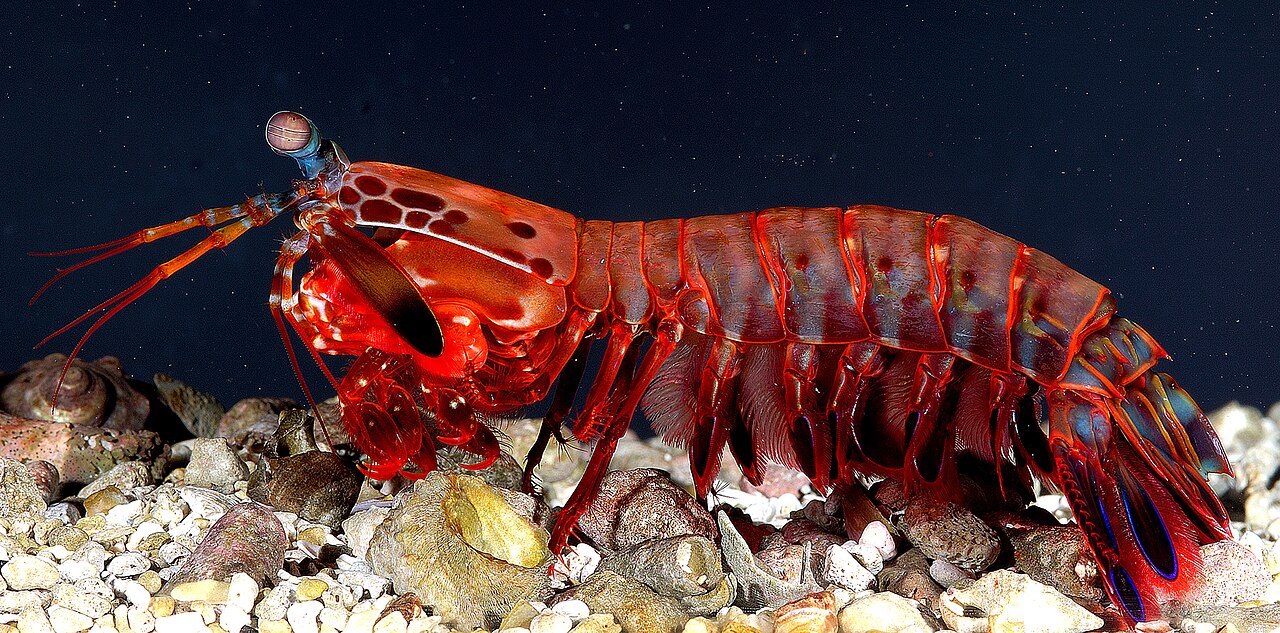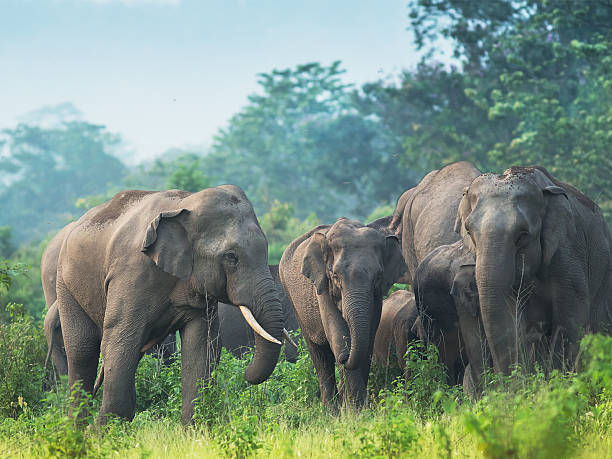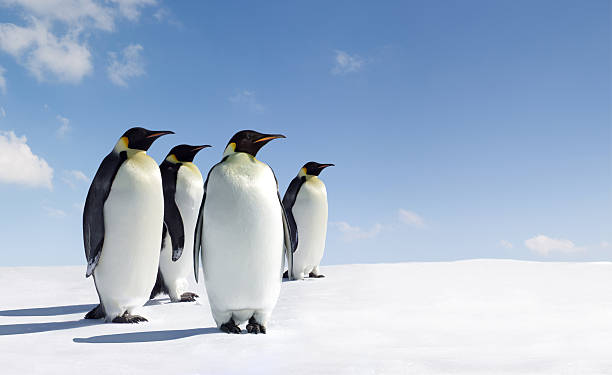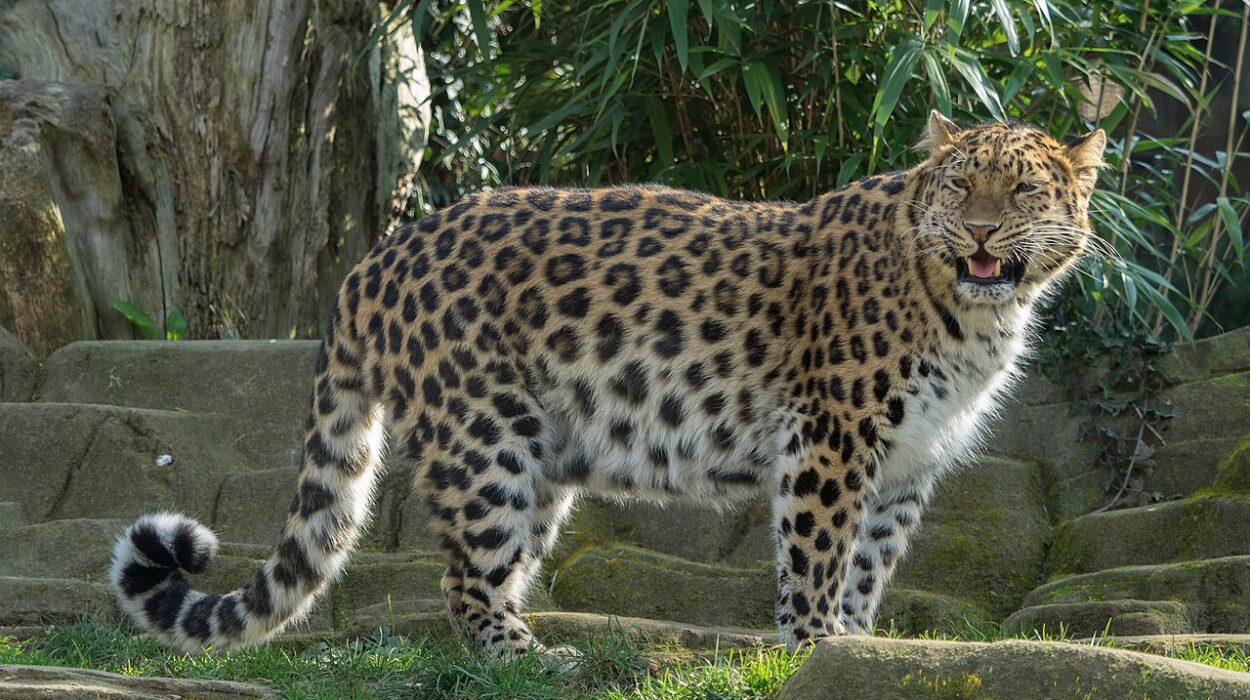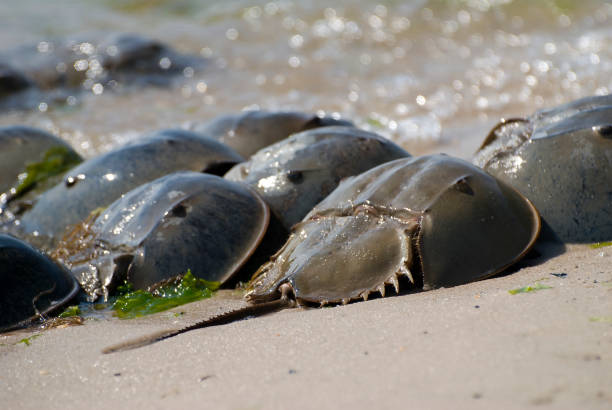The world is full of extraordinary creatures, each carrying within them powers so astonishing they seem almost supernatural. Yet, every one of these abilities is grounded in science—honed through millions of years of evolution, trial, and adaptation. While we humans marvel at comic book heroes, nature has been quietly producing real-life superpowers for eons.
From regeneration to invisibility, from telepathic-like communication to biological immortality, animals wield an astonishing array of talents that challenge the limits of biology and imagination. These are not mere curiosities; they are evolutionary masterpieces, proofs of how diverse and creative life can be.
Let’s journey into this living world of wonder and discover 15 animal superpowers—each one real, tested by science, and far beyond the realm of human capability.
1. The Axolotl – The Regeneration Master
In the dark waters of Mexico’s ancient lakes lives the axolotl, a small, smiling amphibian that possesses one of the most awe-inspiring powers in nature: regeneration.
Unlike humans, who can heal wounds but not regrow limbs, the axolotl can regrow entire body parts—including legs, spinal cord segments, parts of its brain, and even its heart. Scientists have studied these creatures for decades, trying to unlock their biological secrets.
The axolotl’s regenerative ability lies in a special group of cells called blastema cells. When the axolotl loses a limb, its body activates these cells at the wound site, which then transform into whatever tissue is needed—muscle, bone, skin, or nerve.
Even more astonishing, axolotls regenerate without scarring. In scientific terms, they can “turn back the clock” on their cells, reverting them to a stem-cell-like state before rebuilding tissue. If humans could harness even a fraction of this power, it could revolutionize medicine—helping us heal spinal injuries, regrow organs, and recover from trauma in ways that today seem like science fiction.
2. The Tardigrade – The Immortal Survivor
Tiny, tough, and nearly indestructible—the tardigrade, also known as the “water bear,” is perhaps the most resilient creature ever discovered. Barely visible under a microscope, these eight-legged micro-animals can survive conditions that would instantly kill almost any other life form.
Tardigrades can endure temperatures as low as -272°C (close to absolute zero) and as high as 150°C. They can survive in the vacuum of space, under intense radiation, and without food or water for decades.
How do they do it? When faced with extreme conditions, tardigrades enter a state called cryptobiosis. They dry out completely, curling into a tiny ball called a “tun,” and essentially stop all biological activity. Their metabolism drops to less than 0.01% of normal. Once rehydrated, they “come back to life,” as if nothing happened.
This ability to pause existence and resume it later is as close to immortality as nature allows. Scientists are studying tardigrade proteins called Dsup (damage suppressor), which protect DNA from radiation. One day, this research could help preserve human cells for space travel—or even extend life itself.
3. The Mantis Shrimp – The Living Color Cannon
Beneath the waves, the mantis shrimp wields a vision and power so extraordinary that it borders on the supernatural.
Its first superpower lies in its eyes. Humans see color through three types of photoreceptors (red, green, blue). The mantis shrimp has up to sixteen. It can see ultraviolet light, polarized light, and colors beyond human imagination. Its vision is so advanced that scientists use it as a model for next-generation cameras and optical sensors.
But the mantis shrimp is not just an optical marvel—it’s also one of the most powerful strikers in nature. Its club-like appendages move faster than a bullet, accelerating at over 50 miles per hour underwater. The force is so immense that it creates cavitation bubbles—tiny pockets of heat and light that can momentarily reach the temperature of the sun’s surface.
This punch can shatter aquarium glass and crack open hard-shelled crabs in an instant. Scientists have even studied the structure of its club to design stronger, impact-resistant materials.
The mantis shrimp isn’t just colorful—it’s a combination of beauty, strength, and science’s most elegant engineering.
4. The Cuttlefish – The Master of Invisibility
If there were an award for nature’s best illusionist, the cuttlefish would win it without contest.
This marine cephalopod can transform its skin color, texture, and pattern within milliseconds, blending perfectly with its surroundings. It can even mimic coral, sand, rocks, or seaweed—essentially becoming invisible in plain sight.
The secret lies in specialized skin cells called chromatophores, iridophores, and leucophores. Together, these act like a biological display screen. Chromatophores expand and contract to reveal colors, while iridophores and leucophores reflect light to create iridescent effects.
Cuttlefish also have another layer of genius: neurological control. Their brains are directly wired to their skin cells, allowing instant camouflage responses. It’s as if the animal “thinks” in color and texture simultaneously.
Beyond survival, cuttlefish use this power to communicate—flashing patterns in complex visual languages unseen by human eyes.
Scientists studying cuttlefish hope to one day develop adaptive camouflage technologies for soldiers, robots, and even clothing. Imagine a world where a jacket could change color to match your environment—thanks to a lesson from the ocean’s great illusionist.
5. The Electric Eel – The Living Battery
Deep in the murky rivers of South America lurks a creature that would make any superhero jealous: the electric eel.
This elongated fish can generate electric shocks up to 600 volts, powerful enough to knock out prey—or an unsuspecting predator. It can even jump out of the water to deliver shocks directly to threats above the surface.
The electric eel’s power comes from specialized cells called electrocytes. Arranged in long stacks like batteries, these cells create an electric current when activated. By controlling how these cells fire, the eel can produce both low-voltage pulses for navigation and high-voltage bursts for hunting or defense.
Recent research has shown that electric eels also use their discharges to “remotely control” prey movements by stimulating their muscles—effectively manipulating other creatures through electricity.
It’s not just shocking—it’s biological engineering at its finest.
6. The Octopus – The Escape Artist
The octopus is an eight-armed genius. Its intelligence rivals that of some mammals, and its adaptability is nothing short of magical.
Octopuses can solve puzzles, open jars, and recognize individual humans. Their nervous systems are distributed—two-thirds of their neurons are in their arms. Each arm can act independently, “thinking” and reacting even when detached from the body.
Their superpower, however, lies in flexibility and camouflage. With no bones, an octopus can squeeze through holes barely larger than its eye. Combined with color-shifting abilities similar to the cuttlefish, it can vanish into the environment in seconds.
Some species even mimic other sea creatures—like lionfish, flatfish, or sea snakes—adopting both appearance and movement. This behavior, known as dynamic mimicry, is a sophisticated survival strategy unseen in most animals.
The octopus reminds us that true intelligence doesn’t always come in familiar forms—it can be soft, fluid, and utterly alien.
7. The Pistol Shrimp – The Sonic Weapon
Smaller than a human finger, the pistol shrimp (or snapping shrimp) is one of the loudest creatures on Earth.
With a single snap of its oversized claw, it creates a shockwave that stuns or kills nearby prey. The sound can reach over 200 decibels, louder than a gunshot. But the real magic lies in the physics.
When the shrimp snaps its claw shut, it ejects a jet of water so fast it creates a cavitation bubble—a tiny void that collapses violently, producing heat hotter than the surface of the sun (about 5,000°C) and emitting a flash of light.
This “sonic boom” kills prey instantly and stuns fish several times the shrimp’s size. Scientists have even recorded the shrimp’s snaps interfering with naval sonar systems.
The pistol shrimp’s weapon is a testament to the hidden power of physics in biology—a perfect blend of speed, precision, and natural engineering.
8. The Platypus – The Electrosensitive Mammal
The platypus seems like a creature assembled from spare parts: a duck’s bill, a beaver’s tail, and a mammal’s body. But this odd combination hides one of nature’s rarest powers: electroreception.
As it hunts underwater with its eyes, ears, and nose closed, the platypus detects electric fields generated by the muscle contractions of its prey. Its bill is lined with over 40,000 electroreceptors, allowing it to sense the faintest electrical signals.
This makes the platypus one of the few mammals with this ability, joining sharks and rays in using electricity as a sensory tool.
Even more bizarre, male platypuses have venomous spurs on their hind legs—a rare trait among mammals. The venom isn’t deadly to humans but causes excruciating pain.
This quirky, semi-aquatic animal reminds us that evolution has a sense of humor—and an endless imagination.
9. The Archerfish – The Sharpshooter of the Sea
Meet the archerfish, a small tropical fish with a sniper’s precision. It can shoot jets of water from its mouth to knock down insects perched above the surface—sometimes over two meters away.
The fish calculates the distance, angle, and refraction of light (since water bends it) to aim perfectly. It even adjusts for gravity and droplet size, hitting its target with astonishing accuracy.
The archerfish’s brain performs complex physics calculations in milliseconds, all for a single meal. Studies show young archerfish learn to improve their aim over time—proof of learning and practice.
This watery marksman proves that intelligence isn’t limited to land animals; even fish can calculate the geometry of survival.
10. The Peregrine Falcon – The Speed Demon
When it comes to speed, no creature on Earth outruns the peregrine falcon.
During a hunting dive (called a stoop), it can reach speeds over 240 miles per hour (386 km/h)—making it the fastest animal in the world.
Its body is a masterpiece of aerodynamics. Its bones are lightweight but strong, its wings perfectly shaped for minimal drag, and its nostrils designed to regulate airflow during dives.
The falcon’s eyesight is equally superhuman—eight times sharper than a human’s. It can spot prey from over two miles away.
When diving, it tucks its wings tight and becomes a living missile. The impact of its strike is so powerful that it often kills prey instantly.
The peregrine falcon isn’t just a hunter—it’s evolution’s jet fighter, shaped by gravity, physics, and precision.
11. The Immortal Jellyfish – The Ageless Wonder
In the deep oceans swims a tiny, translucent being that may have solved one of life’s greatest mysteries: how not to die.
The Turritopsis dohrnii, or immortal jellyfish, can reverse its own aging process. When injured, starving, or stressed, it reverts from its adult form back to its juvenile stage, essentially restarting its life cycle.
This biological “reset button” is possible thanks to a process called transdifferentiation, where its cells transform into different types. It’s as if a butterfly could turn back into a caterpillar and grow up again, endlessly.
While these jellyfish can still be eaten or destroyed, they show that immortality, at least in principle, is possible in nature. Scientists are studying their cells for insights into aging and regeneration—hoping to one day apply these secrets to human longevity.
12. The Bombardier Beetle – The Chemical Cannon
At first glance, the bombardier beetle looks ordinary—but threaten it, and it becomes a miniature flamethrower.
When attacked, the beetle sprays a boiling hot, noxious chemical mixture from its abdomen, reaching temperatures of nearly 100°C. The reaction is explosive, accompanied by a popping sound and visible steam.
This defense is powered by an internal chemical reaction between hydrogen peroxide and hydroquinone, stored separately until needed. When combined in a reaction chamber, enzymes trigger an explosive burst, ejecting the fluid with pinpoint accuracy.
Chemists study the bombardier beetle’s unique reaction mechanism to inspire designs for safer propulsion systems and controlled-release technologies.
It’s a natural chemistry lesson—and a reminder that small size doesn’t mean small power.
13. The Dolphin – The Echolocation Genius
Graceful, social, and remarkably intelligent, dolphins have evolved one of the most sophisticated sensory systems in nature: echolocation.
By emitting high-frequency clicks and listening for returning echoes, dolphins can “see” with sound. This ability allows them to navigate murky waters, locate prey, and even identify objects as small as a coin.
Their sonar is so precise that they can distinguish between materials like metal, wood, and plastic. Scientists believe they create three-dimensional mental images of their surroundings through sound alone.
Dolphins also use complex vocalizations to communicate—some have unique “signature whistles” that function like names. Their brains are large, their social bonds strong, and their intelligence rivals that of great apes.
To “hear” the world the way dolphins do is to experience an entirely different dimension of perception—one that humans can only imagine.
14. The Chameleon – The Living Mood Ring
Few animals capture imagination quite like the chameleon. With its independently moving eyes, prehensile tail, and ability to change color, it’s a walking, breathing marvel.
Chameleons don’t change color primarily for camouflage—it’s more about communication and temperature regulation. Their skin contains special cells called iridophores filled with nanocrystals that reflect light differently based on their arrangement.
When a chameleon is calm, the crystals are close together, reflecting blues and greens. When excited or angry, the crystals spread out, shifting the reflected light toward yellows, oranges, and reds.
They also use this color change to signal mood, attract mates, or warn rivals. Beyond beauty, their eyes move independently, giving them nearly 360-degree vision—perfect for hunting insects with their lightning-fast tongues.
The chameleon’s world is one of light, reflection, and expression—a living artwork that adapts with emotion.
15. The Spider – The Master Engineer
Spiders may inspire fear, but their silk is a triumph of natural engineering.
Spider silk is stronger than steel by weight, incredibly flexible, and capable of stretching up to five times its length without breaking. It’s also biodegradable and lightweight—qualities synthetic materials can’t fully replicate.
Each spider produces up to seven types of silk for different purposes: building webs, wrapping prey, or creating egg sacs. The silk’s molecular structure combines crystalline regions for strength and amorphous regions for elasticity, a design so efficient it’s studied for applications in medicine, armor, and materials science.
Some species, like the Darwin’s bark spider, produce silk strong enough to span rivers. Others, like the ogre-faced spider, use silk as a net, hurling it at prey in lightning-fast strikes.
In every thread, there’s elegance, physics, and evolution’s artistry woven together.
The Science of Superpowers
Every one of these animal abilities—whether regeneration, flight, or invisibility—is rooted in biology’s endless creativity. Evolution doesn’t design with intent; it experiments, refines, and perfects. Over time, nature has sculpted powers that seem magical only because we have not yet caught up with the science behind them.
These creatures don’t just survive—they thrive by bending the rules of life itself. The axolotl’s healing defies human medicine. The mantis shrimp’s vision redefines perception. The jellyfish’s immortality challenges the limits of time.
And through them, we are reminded that life’s diversity is not random chaos—it is intelligent adaptation, written in DNA, tested by time, and illuminated by wonder.
The Final Reflection
When we gaze at animals with awe, we are really looking at the potential of life itself—how creativity, necessity, and survival intertwine to produce abilities beyond imagination.
These fifteen creatures are not fantasies from comic books; they are real, alive, and thriving all around us. They whisper the same truth: that evolution is the greatest artist of all, painting miracles in muscle, feather, and cell.
Their powers invite us not only to marvel but to learn—to explore, to innovate, and to protect the living world that continues to inspire science itself.
